In a previous installment, I shared my experience flying Japan Airlines’ domestic first class on an Airbus A350-900, from Sapporo to Tokyo. As I hinted at in the post, Japan Airlines has a pretty lucrative cash upgrade program, whereby you can buy upgrades on the day of departure at a reasonable cost.
In this post I wanted to talk a bit more about how this program works, since prior to experiencing it myself, I wasn’t sure about the logistics. The good news is that it’s super straightforward.
In this post:
The basics of Japan Airlines’ domestic classes of service
Japan Airlines has a fleet of jets that exclusively operate domestic flights. That’s because these are mostly super short flights, so the airline has higher density aircraft for these types of routes, than it offers on its international and long haul services.
Japan Airlines’ wide body domestic jets include the Airbus A350-900, Boeing 787-8, and Boeing 767-300ER (there’s also an international version of the 787-8). These planes are all in a three cabin configuration:
- First class features lounge access, the most spacious seats, proper meal services on many routes, attentive service, and an excellent drink selection, including alcohol
- Class J is the second cabin, but this is not really business class; instead, think of it like premium economy seats that are slightly wider and have more legroom, but without additional services, as there are no meals, no alcohol, no lounge access, etc.
- Economy class is what you’d expect, as it’s the most basic product available
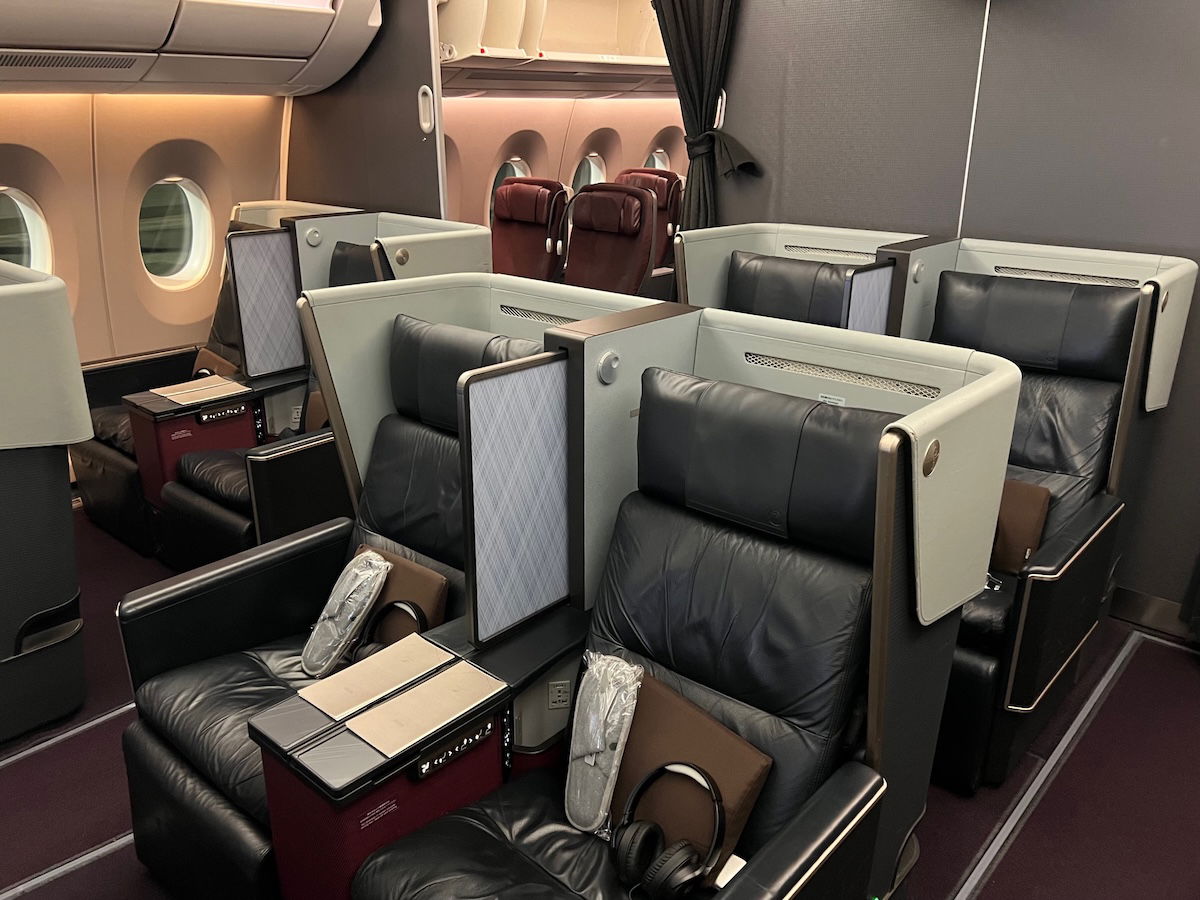
One thing worth mentioning upfront is that premium cabins on domestic flights are often very reasonably priced. This isn’t like international first class, where a ticket will cost you thousands of dollars. Instead, it’s common to see Class J cost $15-50 more than economy, and for first class to cost maybe twice as much as economy. So you don’t need to be a high roller to book a premium cabin on these flights.
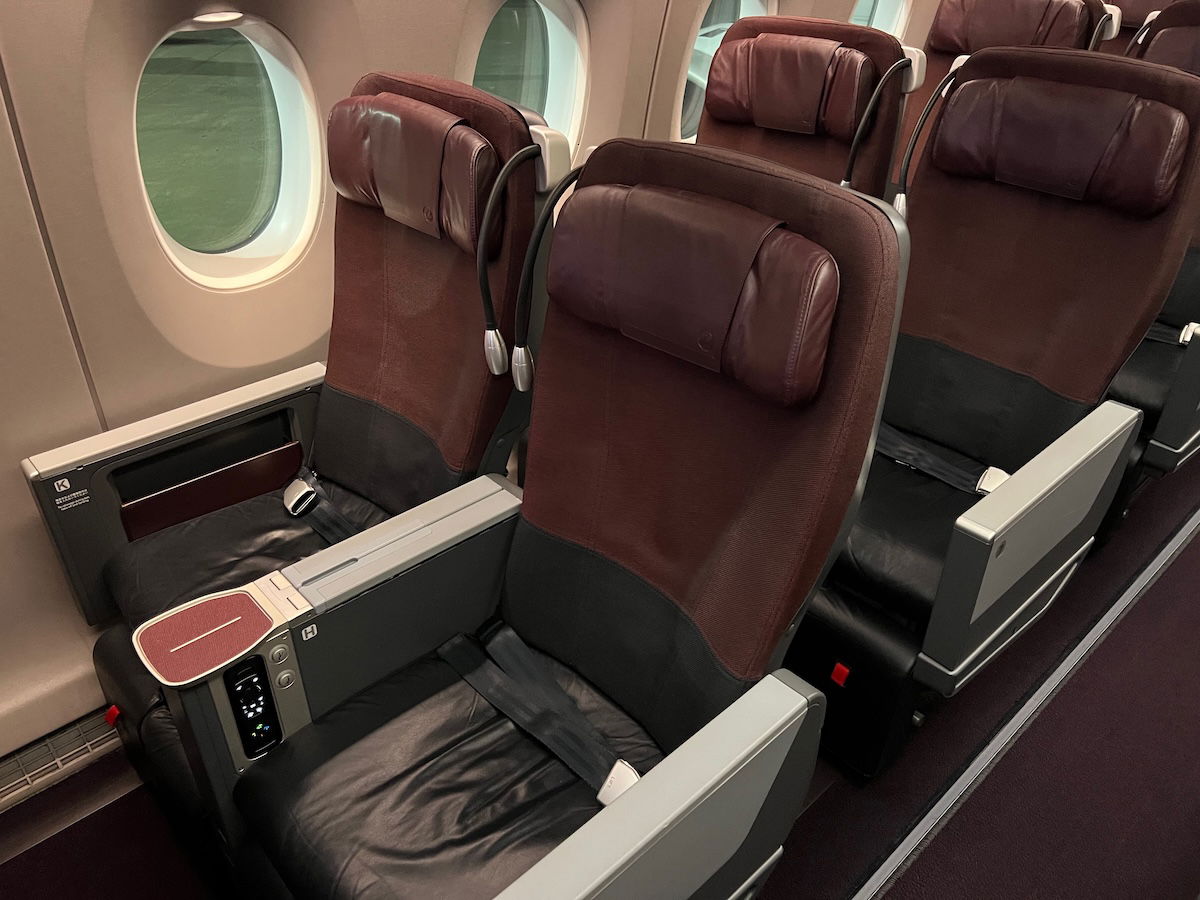
Japan Airlines departure day upgrade cost with cash
While there are many airlines that offer upgrades for cash under some circumstances, few airlines are as straightforward in this regard as Japan Airlines. The airline sells departure day upgrades, available starting three hours before departure. There’s last seat availability, so as long as a seat is available for sale at that point, you can upgrade to it.
Virtually all types of tickets are eligible for these upgrades. For example, I was traveling on a partner award ticket booked with American AAdvantage miles, and that was eligible as well.
Furthermore, upgrades are available between all cabins — you can upgrade from economy to Class J or first class, and you can upgrade from Class J to first class. As you’d expect, the upgrade cost varies based on whether you’re doing a one class upgrade or two class upgrade.
Here’s Japan Airlines’ page with upgrade costs, which is dependent on the route. Just to give you a sense of upgrade costs to & from Tokyo:
- An economy class to Class J upgrade costs anywhere from 1,100 JPY to 3,300 JPY (7-22 USD)
- An economy class to first class upgrade costs anywhere from 11,000 JPY to 13,200 JPY (74-89 USD)
- A Class J to first class upgrade costs anywhere from 8,800 to 9,900 JPY (59-66 USD)
Just to be clear, the price is consistent for any particular route, so that range just reflects the different pricing across routes. For example, on the Sapporo to Tokyo route, an economy class to Class J upgrade costs 2,200 JPY ~15 USD), an economy to first class upgrade costs 11,000 JPY (~74 USD), and a Class J to first class upgrade costs 8,800 JPY (~59 USD).
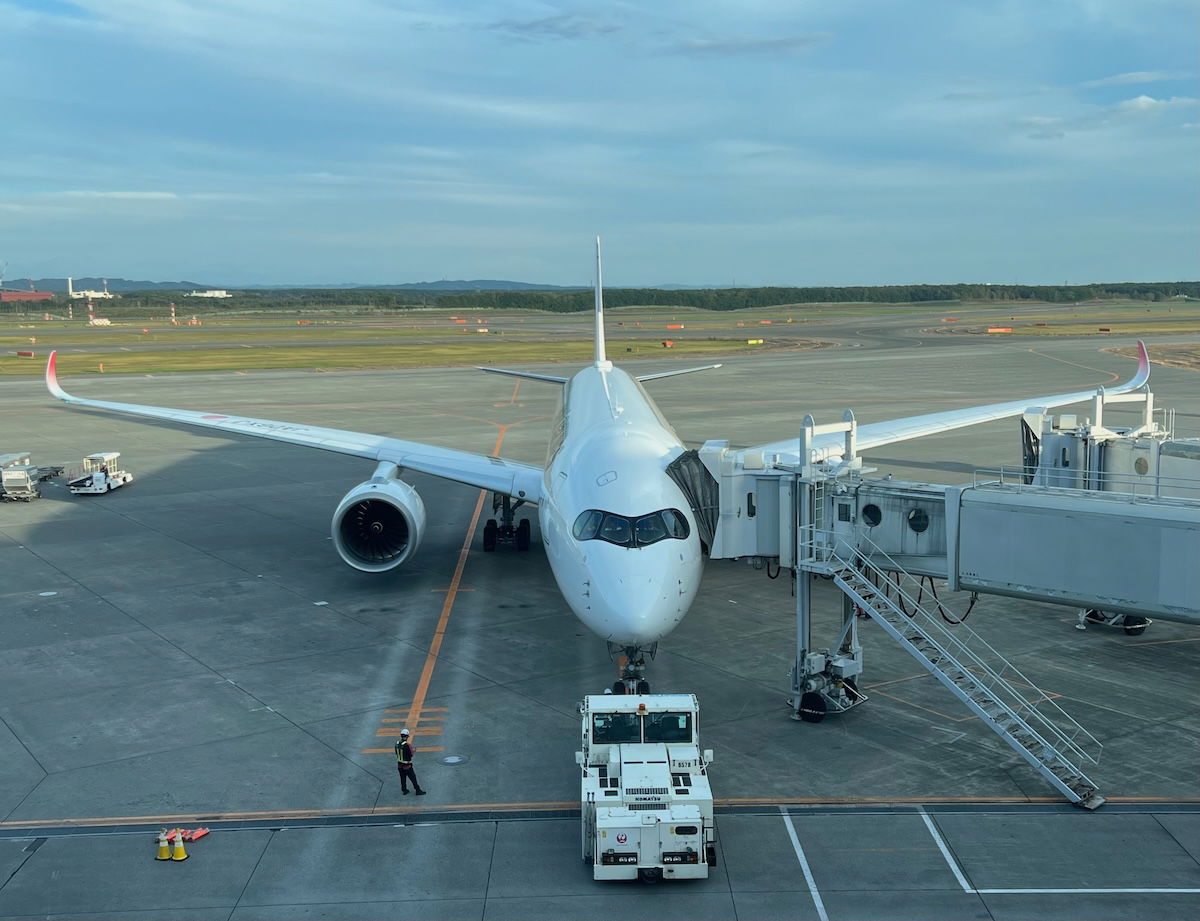
Japan Airlines cash upgrade procedure
Departure day upgrades for cash on domestic flights are available between three hours and 20 minutes of departure. It’s my understanding that if you booked directly through Japan Airlines, then this upgrade is possible through the Japan Airlines website or app.
However, I was booked on a third party ticket, in which case the upgrade has to be requested at the airport. Japan Airlines has a dedicated ticketing counter at each airport, and it’s my understanding that this is also where an upgrade can be requested.

However, I had access to the Japan Airlines Diamond Premier Lounge Sapporo on account of my oneworld Emerald status, and I was at the airport more than three hours before departure. So when I entered the lounge, I asked the agent if it would be possible to upgrade for cash in the lounge, and she told me just come see here three hours before departure.
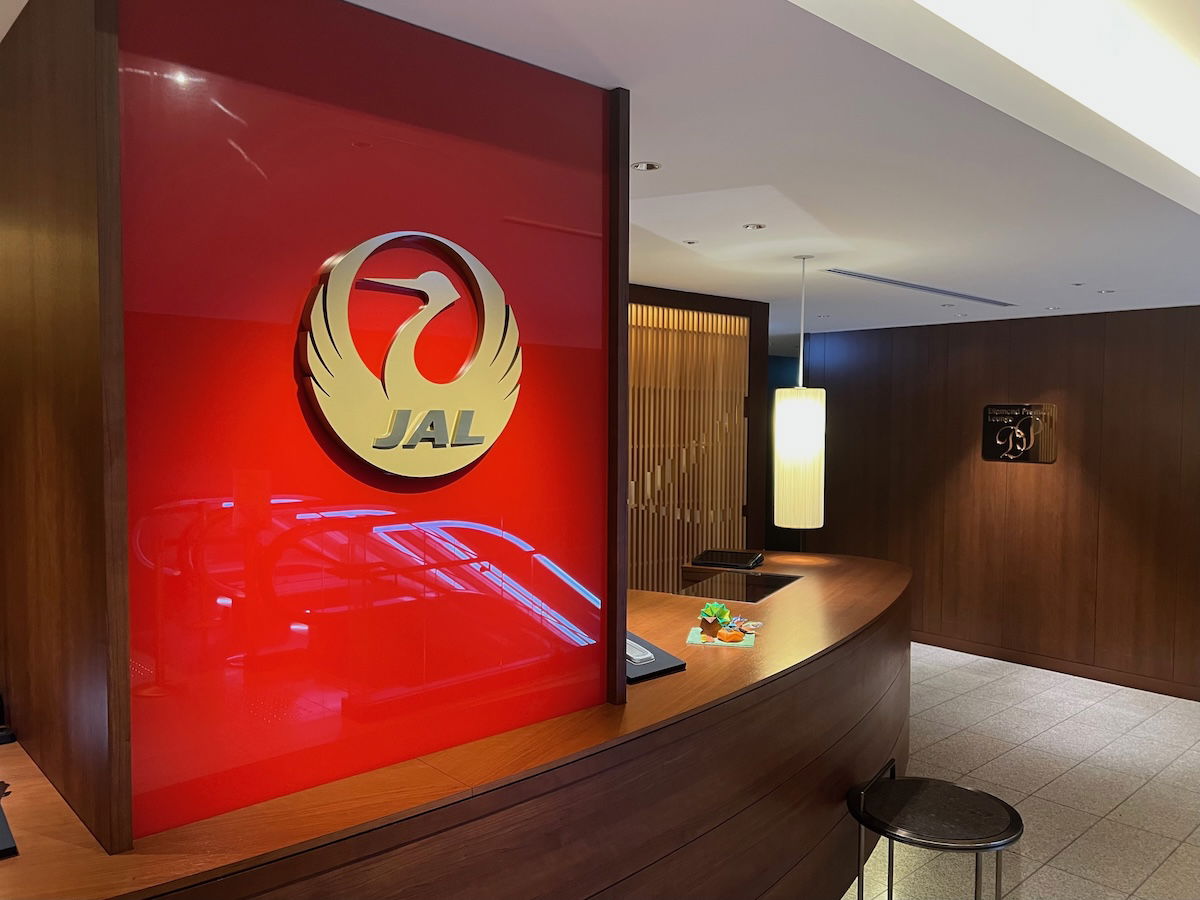
Sure enough, I walked back exactly three hours before departure, she did some typing, and then handed me the below slip, quoting me a price of 8,000 JPY (~54 USD). Okay, that was actually cheaper than the 8,800 JPY I was expecting to spend for a Class J to first class upgrade, but I’ll take it (maybe I wasn’t billed the 10% sales tax, but I’m not sure why?)!
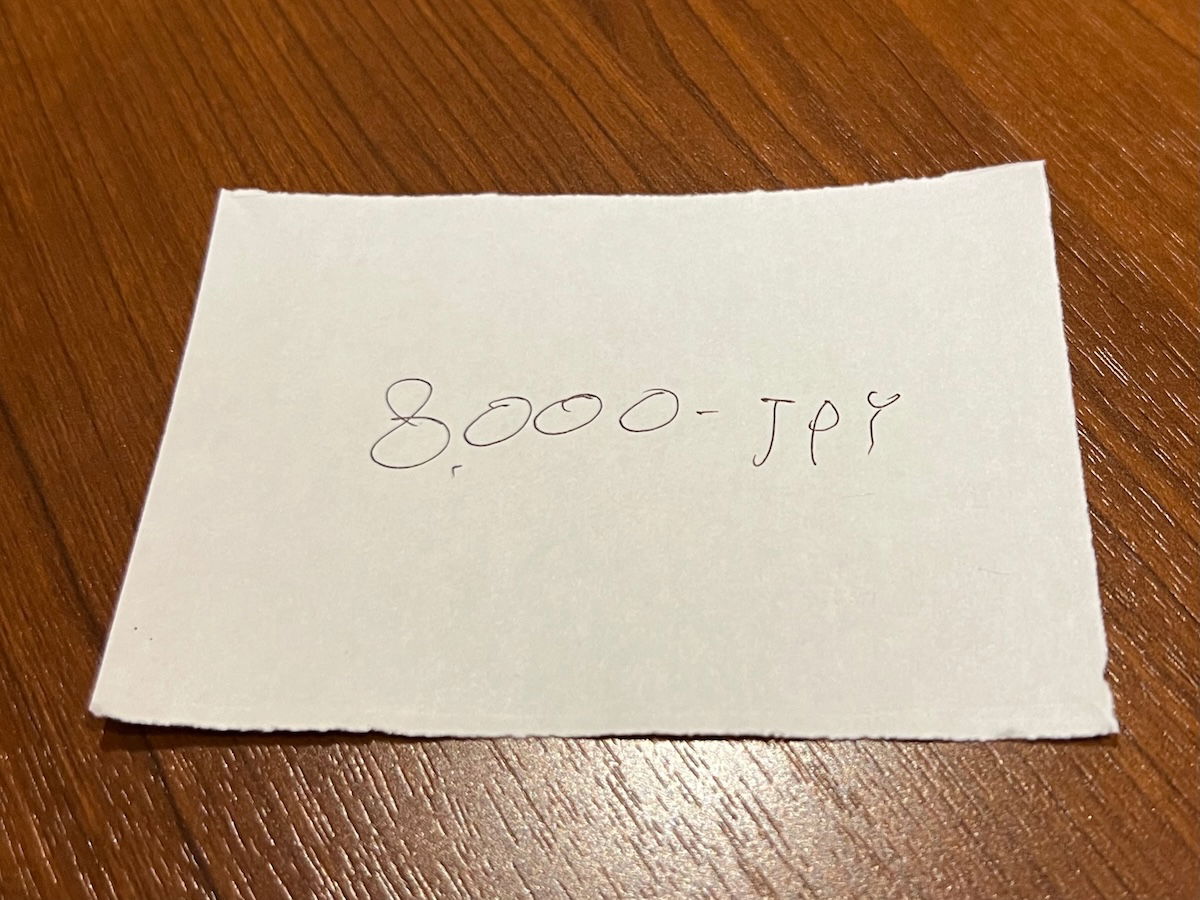
The agent then continued to do some typing, and requested my credit card. A couple of minutes later, I had a boarding pass first class, plus a receipt, listing the cost of the upgrade.

How often are Japan Airlines cash upgrades available?
If you’re looking to upgrade to first class, the catch is that these cabins are quite small. The A350 has 12 first class seats, the 787 has six first class seats, and the 767 has five first class seats. Given the reasonable first class pricing to begin with, these cabins do often sell out.
For example, Sapporo to Tokyo flights are largely operated by A350s and are very frequent. At the three hour mark, I noticed that most flights had about one or two first class seats left for sale. Meanwhile the flight I was on had six first class seats left for sale at that point, so it seems I chose the quieter frequency. However, the cabin did end up going out full in first class, so clearly there’s lots of demand for these upgrades.
Upgrades from economy class to Class J tend to be a bit easier, since Class J is a huge cabin, with lots of seats. Still, people do often book this, given the reasonable price premium.
If you want to know your odds of there being upgrade space, it can help to check before departure how many seats are left for sale in a particular cabin. For example, I use ExpertFlyer to look this up, but you can also use Google Flights, and see how many Class J or first class seats the airline is willing to sell you on the flight you’re on.
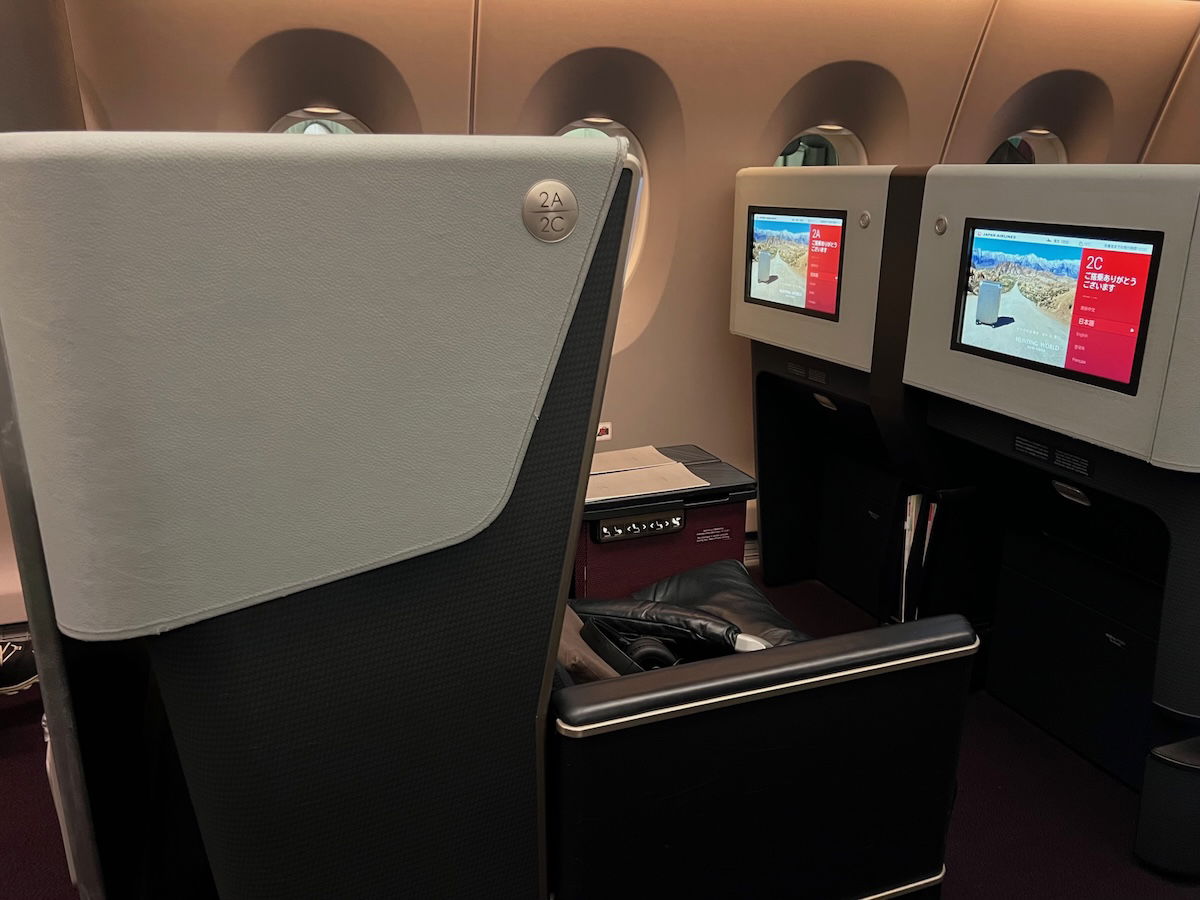
Are Japan Airlines cash upgrades worth it?
Flying within Japan is a pretty dignified experience across the board. For example, even in the carrier’s A350 economy, everyone gets free Wi-Fi, seat back entertainment, reasonable seat pitch, a drink, etc.
I’d consider a Class J upgrade if you value the extra space, but don’t expect anything special beyond that.
Meanwhile I must say that Japan Airlines first class on domestic flights is really nice, especially given the price point. It’s truly a pretty special experience, in terms of the service, food, drinks, lounge access, etc. I don’t think cash upgrade deals get much better than what you’ll find at Japan Airlines on a domestic flight.
Like, the cost to upgrade is less than a day pass to an American Admirals Club, and suffice it to say that you get a lot more value than that. Personally I think it’s something worth splurging on, if you can swing it. If there’s ever a time to purchase a paid upgrade, this is it.
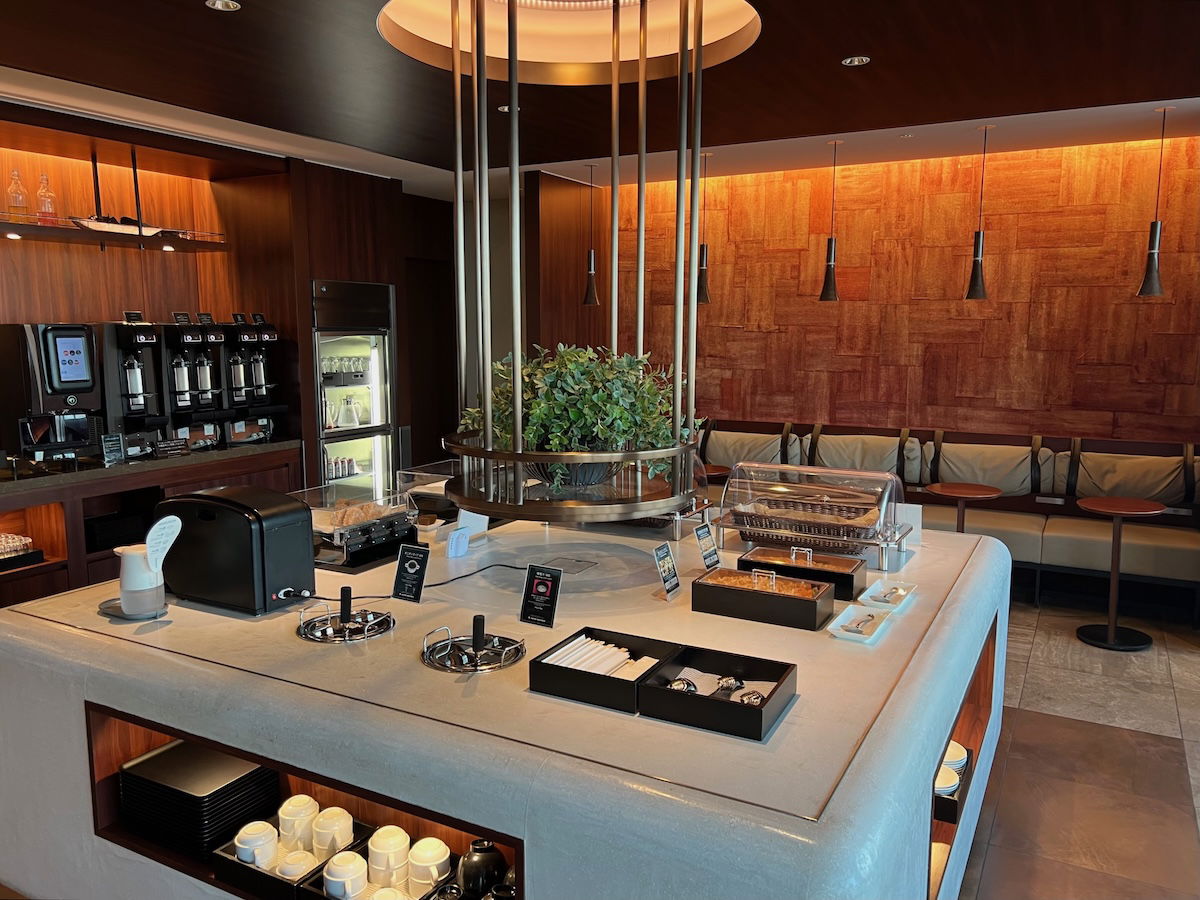
Bottom line
Japan Airlines has a published cash upgrade program for domestic flights, available starting three hours before departure. The pricing is exceedingly reasonable, especially given the amazing experience that the airline offers. If you find yourself on a Japan Airlines domestic flight with empty first class seats, I’d highly recommend considering this.
Just keep in mind that Japan Airlines first class is often reasonably priced to begin with on domestic flights, so it could be worth booking in the first place.
What’s your take on Japan Airlines’ cash upgrades on domestic flights?





Hi Ben,
I was looking up information for JAL Departure Date Cash Upgrade. Their web page now says "Departure date upgrade will be the service only for the JAL Mileage Bank (JMB) members starting from December 18, 2025." Does this mean that tickets not booked under/linked to a JMB membership will not be able to take advantage of same day upgrade from Dec 18?
Thanks,
Brian
Great tip! Just boarded ITM-HND and chilling in 1st class. Money well spent.
Your CTS-HND ticket was sold as part of an international itinerary, and all international air tickets are exempt from the 10% Sales Tax, so the tax won't apply as long as the connection time between the international and domestic flight(s) is under 24 hours.
https://faq-en.jal.co.jp/app/answers/detail/a_id/30559/~/does-the-international-fare%2C-charges-or-fees-include-japanese-consumption-tax%3F
JAL is great in so many ways... except both JAL and ANA arbitrarily limit carry on allowance to 10kg TOTAL regardless of the cabin you're in...
I didn't know this, and had medical equipment in my roller carry on (too large to transfer to my laptop bag). I told them, I simply can't check it. They did end up letting me on with it... but honestly seems insane to me that on a $7k -...
JAL is great in so many ways... except both JAL and ANA arbitrarily limit carry on allowance to 10kg TOTAL regardless of the cabin you're in...
I didn't know this, and had medical equipment in my roller carry on (too large to transfer to my laptop bag). I told them, I simply can't check it. They did end up letting me on with it... but honestly seems insane to me that on a $7k - $8k ticket you're still 'limited' to '10kg' of carry on luggage...
They didn't seem to even be checking at the gate. Saw plenty of business guys with the aluminum Rimowas (that way like 6kg empty...) and I know first hand it's near impossible to get a laptop bag to weight less than 8 pounds when full...
Lesson learned is don't check in at the counter or don't fly domestically within Japan... but as you said, JAL is super picky about availability, and there's often WAY more availability if you are connecting...
Was this part of an international ticket? That could explain why tax wasn't charged.
This is new to me.. when I regularly flew JAL domestic, the same day airport standby upgrades to Class J were a flat 1000jpy. I would get a Japan explorer fare for 10,000jpy and add the Class J upgrade where I could for another 1000jpy more which made it very cheap and comfortable to fly 1-2 hours domestically.
Googling shows this was changed in 2022.
According to the picture of receipt it says "UPGRADE 免税" - so the Japanese here means exactly that, tax free.
That's why it's 8000 Yen.
Thanks Ben. Sounds a good deal. Can I confirm that an upgrade to first using this option does get you lounge access at departure airport? Thanks
Good to know. I prioritize the experience over loyalty when flying domestic in Asia. I've found OW carriers there (CX and JAL at least) too obsessed with fare codes to make it worth prioritizing them.
I flew NRT -> TPE on CX for like $300 on an economy fare and it earned me 0 miles and 0 AA loyalty points. From a review of the JAL earning, a good deal of fare codes also earn nothing, or a scant percentage of miles flown in economy.
CX from NRT to TPE is a fifth freedom flight, so it's super cheap, but you don't really get any miles.
If it’s a cash ticket, do you earn bonus AA Loyalty Points for flying premium economy or domestic first on JAL? Just curious as that would obviously sweeten the deal a bit.
@ dx -- It's my understanding that it credits based on the initial fare class.
It credits based on the upgraded fare.
+1 to CPH-Flyer and it is quite popular way to boost JAL status credit called Fly On Point and improve SCs/cost ratio. I remember that it was also popular trick for other OW programs using Status Credit to boost SCs like BA and QF, but I am not sure still that is the case.
@Ben: Does the upgrade have any effect on lounge access when connecting to a JAL international flight? If you have a CTS-HND-JFK award ticked in business and buy a domestic F upgrade, does it get you into the international F lounge?
@ SBS -- It doesn't, as there are dedicated domestic first class lounges, with different access requirements than international first class lounges.
It normally would have been 8,800 yen (8,000 yen plus 10% sales tax). You might not have had to pay sales tax because you were transiting on an international ticket, but it could also have been an oversight.
@ Jesse -- Ah, that could be it, thanks!
Oh, it actually says tax free right on the receipt. 免税 next to UPGRADE means "tax free," so mystery solved.
given the very narrow timeframe in which these are even available, these are just a very cost effective way to monetize the few remaining seats.
The price differential and the lack of difference in pricing depending on time probably says there are some flights where multiples of these seats are available and other times when there will be none of these seats available.
Since it is so close to departure, JAL undoubtedly caters the...
given the very narrow timeframe in which these are even available, these are just a very cost effective way to monetize the few remaining seats.
The price differential and the lack of difference in pricing depending on time probably says there are some flights where multiples of these seats are available and other times when there will be none of these seats available.
Since it is so close to departure, JAL undoubtedly caters the first class cabin full so they will have 100% pork for every seat - which is notable since the Japanese clearly don't think pigs are any smarter than dogs or other four legged creatures.
Great, this will mean more folks that don't bother to learn the language to demand they're "now in first"...
Frankly, I think one of the reason that JAL domestic first is not easily bookable via partner miles is because they want to keep it catered to the domestic client orr clients who bother to learn the language and local etiquette.
I love Japan and travel there probably 3 or 4 times a year,...
Great, this will mean more folks that don't bother to learn the language to demand they're "now in first"...
Frankly, I think one of the reason that JAL domestic first is not easily bookable via partner miles is because they want to keep it catered to the domestic client orr clients who bother to learn the language and local etiquette.
I love Japan and travel there probably 3 or 4 times a year, and learning the language makes you realise how shallow the "western" view of Japan somewhat underappreciate what it has to offer.
Great idea, a separate class only for certain people.... Kind of like those who had to sit at the back of the bus and those privileged enough to sit at the front. Is that what you are getting at?
@aC - Yes, we know that Japan is super racist, no need to remind us.
Great post Ben. I have availed of the F class upgrade to ITM a few times now and it really is worth it! Firstly to point out a typo: you have put 11,000 JPY = 22USD and you meant 72USD.
Secondly I wondered if you know of any way to do this without physically presenting oneself at the office if on an AA award ticket? I have one day in Tokyo before my winter...
Great post Ben. I have availed of the F class upgrade to ITM a few times now and it really is worth it! Firstly to point out a typo: you have put 11,000 JPY = 22USD and you meant 72USD.
Secondly I wondered if you know of any way to do this without physically presenting oneself at the office if on an AA award ticket? I have one day in Tokyo before my winter flight to CTS and if it could be done on the phone instead and give us an extra hour in the city centre that would be great?
On a non JAL issued ticket you need to go to an airport counter. You can request it at check in manned or kiosk, at ticket counter landside, a service counter airside, or at the lounges.
@ Pogonation -- Fixed, thank you! And unfortunately much like CPH-Flyer said, I don't think there's any way to do this outside of the airport if you're on a partner ticket, sadly.
The pricing for booking first class in advance is often a much higher uplift than the day of departure upgrades. This is due to the fare class and what available fare class allows for a first class booking outright. The number of first class seats available for the discounted fare classes are very low, so while you might get a super discounted Y fare, the base fare you need to be able to book domestic...
The pricing for booking first class in advance is often a much higher uplift than the day of departure upgrades. This is due to the fare class and what available fare class allows for a first class booking outright. The number of first class seats available for the discounted fare classes are very low, so while you might get a super discounted Y fare, the base fare you need to be able to book domestic first class can be a lot higher. And often you'd see a 30,000 yen or more difference between Y and F.